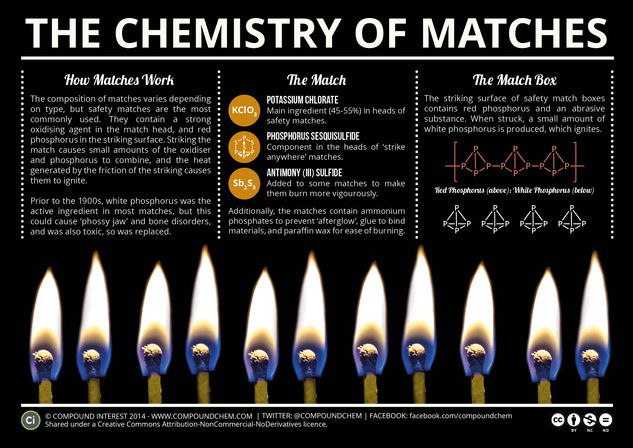© Compound InterestThe Chemistry of Matches
Matches, as it turns out, have been around for a long time. Sulfur-based matches are mentioned as far back as the 1200s in texts of the time, and in the 1600s a process involving drawing sulfur matches through dried phosphorus-soaked paper was devised. However, the friction matches we’re used to have their origins in the 1800s; the first were developed by the English chemist, John Walker, in 1826. His matches involved a mixture of potassium chlorate, antimony (III) sulfide, gum and starch, which ignited when struck on sandpaper. These matches were somewhat unreliable in whether or not they would successfully strike, however.
In 1830, Charles Sauria, a French chemist, invented the first phosphorus-based match, by replacing the antimony sulfide in Walker’s matches with white phosphorus. Whilst much easier to ignite, these matches, too, had issues. Although they were manufactured over a number of decades, the toxicity of white phosphorus slowly became apparent. The long term exposure to white phosphorus of those making the matches led to ‘phossy jaw’ – an affliction which caused toothaches, major swelling of the gums, disfigurement, and eventual brain damage. The only treatment was the removal of the jaw bone. As more about the toxicity of white phosphorus became known, it was eventually banned in 1906.







